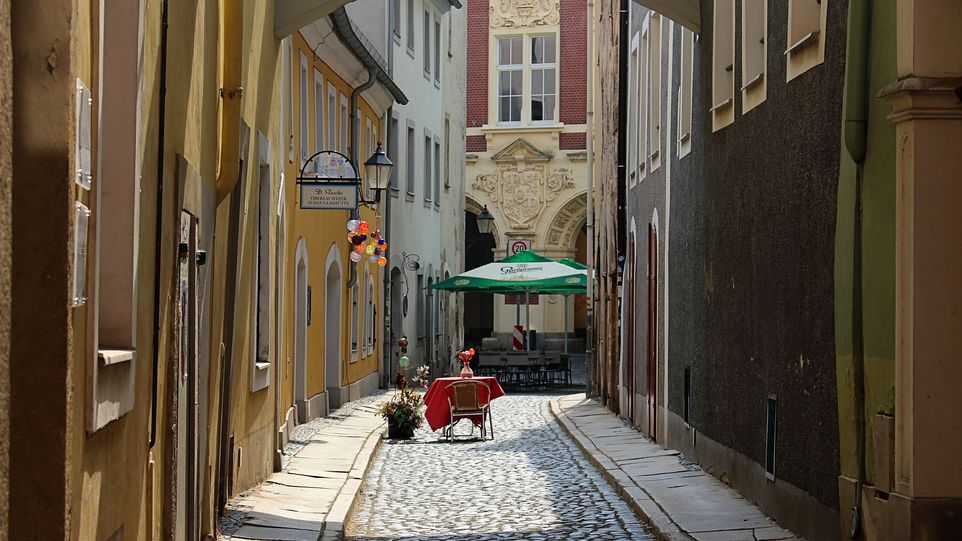
Cultural heritage as a factor for quality of life

With their historical centres, many towns and small cities in Germany and Europe have a unique quality of life. A list of relevant indicators ensures that this is more easily recognized.
01/27/2021 · Wirtschafts- und Sozialwissenschaften, Raumwissenschaften · Leibniz-Institut für ökologische Raumentwicklung · News · Forschungsergebnis
With their historical centres, many towns and small cities in Germany and Europe have a unique quality of life. However, most studies on urban life as well as city rankings ignore the potential of this cultural heritage. Now scientists from the Leibniz Institute of Ecological Urban and Regional Development (IOER), the International Institute (IHI) Zittau of the Technische Universität Dresden and the Polish Institute for Territorial Development (IRT) have developed a list of relevant indicators to ensure that the quality of life in smaller municipalities is more easily recognized and visualized in the future. They present their research results in the journal Environmental and Sustainability Indicators.
In order to adequately determine the quality of life in small and medium-sized towns, it is necessary to apply different standards than for large cities. While this sounds logical, it is largely disregarded in many studies on the quality of urban life and in city rankings. That’s the finding of research undertaken as part of the project "REVIVAL! – Revitalization of historic towns in Lower Silesia and Saxony". In particular, the focus of the German-Polish research team led by Prof. Dr. Robert Knippschild from the IOER was the cultural heritage of historical small and medium-sized towns along the border between Saxony and Poland.
The scientists investigated the extent to which cultural heritage, in particular historical buildings in the town centres but also intangible heritage such as craft traditions, contributes to the quality of urban life. To make this contribution more easily quantifiable, they compiled a complete set of relevant factors. The list currently consists of more than 100 such indicators.
Measuring the advantages of small and medium-sized towns
According to study director Robert Knippschild: "Until today, cultural heritage is largely ignored by studies on the quality of urban life. This is in complete contrast to economic or ecological factors, for example, where large cities often score well." Smaller cities inevitably fare worse in the usual ranking system. Knippschild: "These poorer results can set in motion a negative spiral, because the external perception also influences the internal perception within towns and small cities. Especially for those located in the periphery, this can exacerbate already challenging or damaging trends." By applying their findings, the research team hopes to counteract these negative cycles.
The list of possible indicators was developed from a literature research, expert interviews and focus group discussions in the participating small and medium-sized towns. It is intended to help identify and measure the advantages of these historical settlements. As Robert Knippschild explains: "If the contribution of cultural heritage to the quality of urban life can be measured and quantified, this will make it much easier to activate its potential in politics and planning."
Activating the potential through good management
This has also been shown by the activities in the REVIVAL! project, within which the list of indicators was developed. The theoretical findings of the scientific team were based on the field research conducted in the ten partner towns along the Saxon-Polish border. After the focus group discussions in the municipalities revealed the incredible richness of the local architectural heritage, the scientists concluded from their study that this resource can enhance all aspects of the quality of urban life in these settlements. However, it also became clear that the local framework conditions determine whether the small and medium-sized towns are able to activate the potential of their cultural heritage.
As Robert Knippschild from the IOER points out: "The mere existence of historical buildings and intangible heritage does not imply that they will automatically contribute to the quality of life in towns or cities. This potential needs to be activated through integrated management. An awareness of these things is, of course, needed; but so is commitment, a close collaboration between the local authorities and citizens and, last but not least, sufficient funding." In fact, the REVIVAL! project was able to offer some financial assistance. In the course of the project, the four German and six Polish towns and small cities were each able to implement a pilot measure and thus render their cultural heritage more visible to local residents and visitors.
The list of indicators that could in future quantify the contribution of a town's cultural heritage to the quality of life is not yet complete. The indicators have first to be tested and refined through further research. And they must be adopted by studies on the quality of urban life and incorporated into various benchmarks for the much-publicized city rankings.
Information on the REVIVAL! project (German/Polish)
Original publication
Battis-Schinker, Eva; Al-Alawi, Sarah; Knippschild, Robert; Gmur, Karolina; Ksiazek, Slawomir; Kukula, Marta; Belof, Magdalena: Towards quality of life indicators for historic urban landscapes – Insight into a German-Polish research project. In: Environmental and Sustainability Indicators (Online First), 2020, 100094.
https://doi.org/10.1016/j.indic.2020.100094